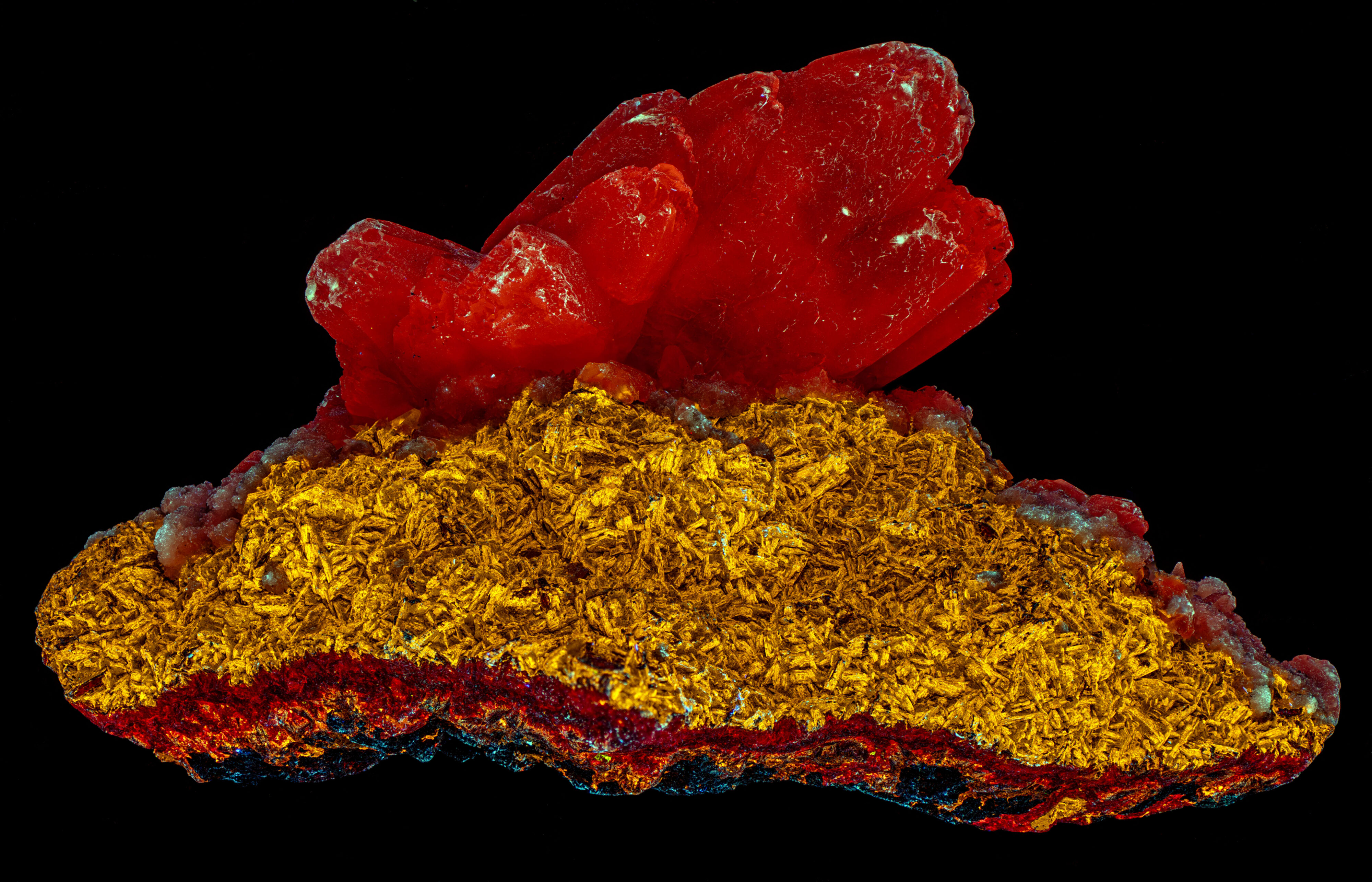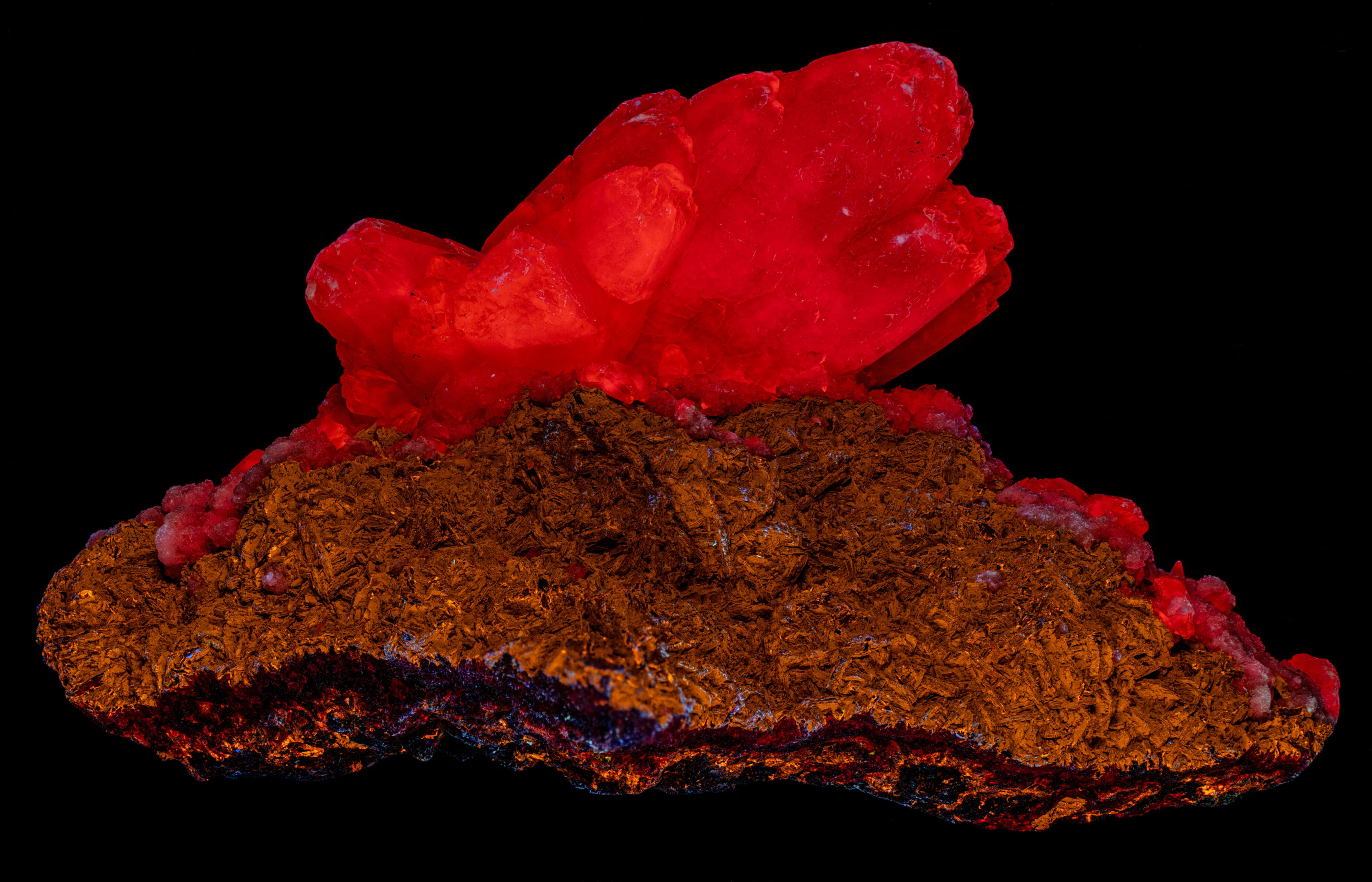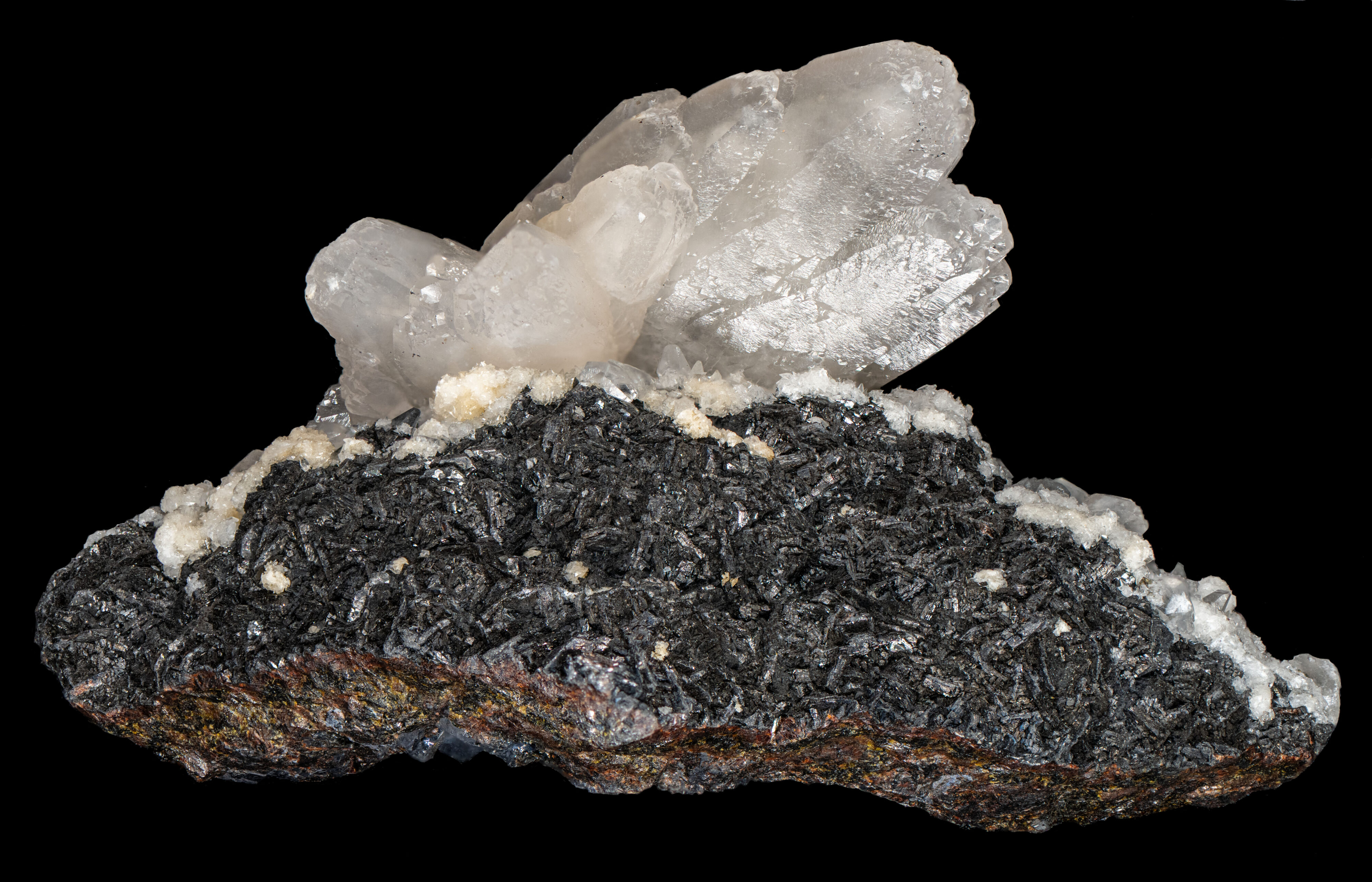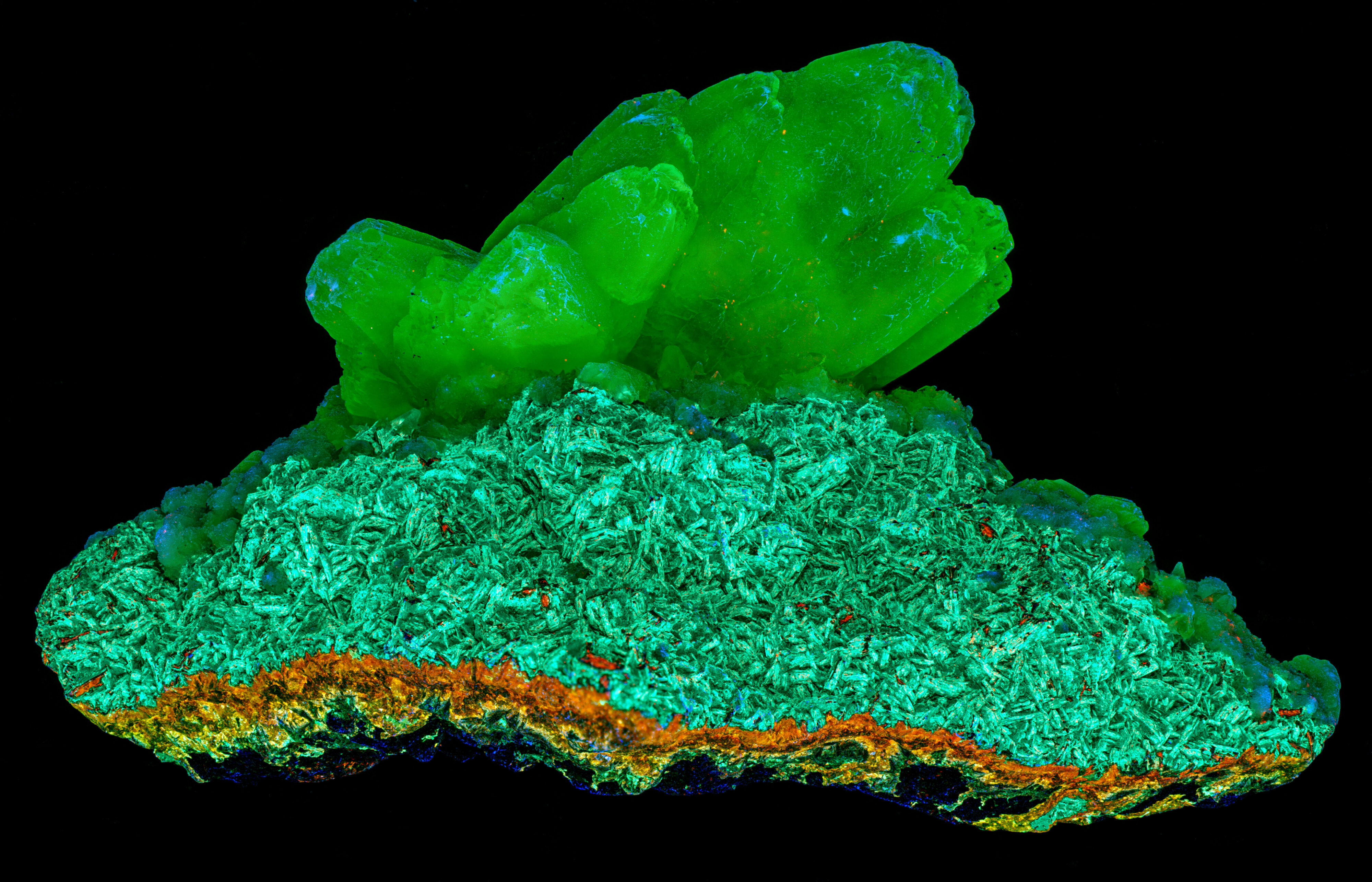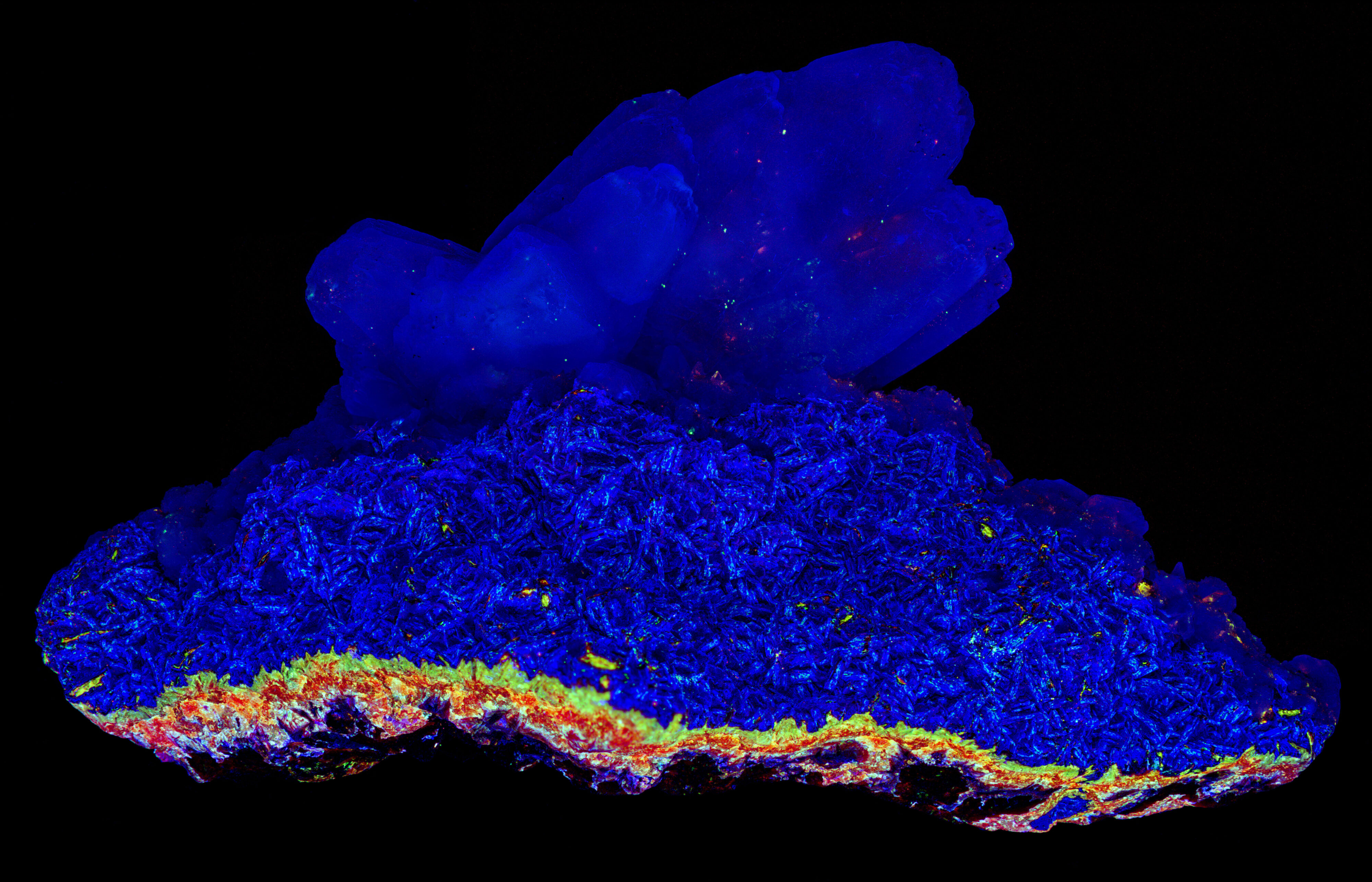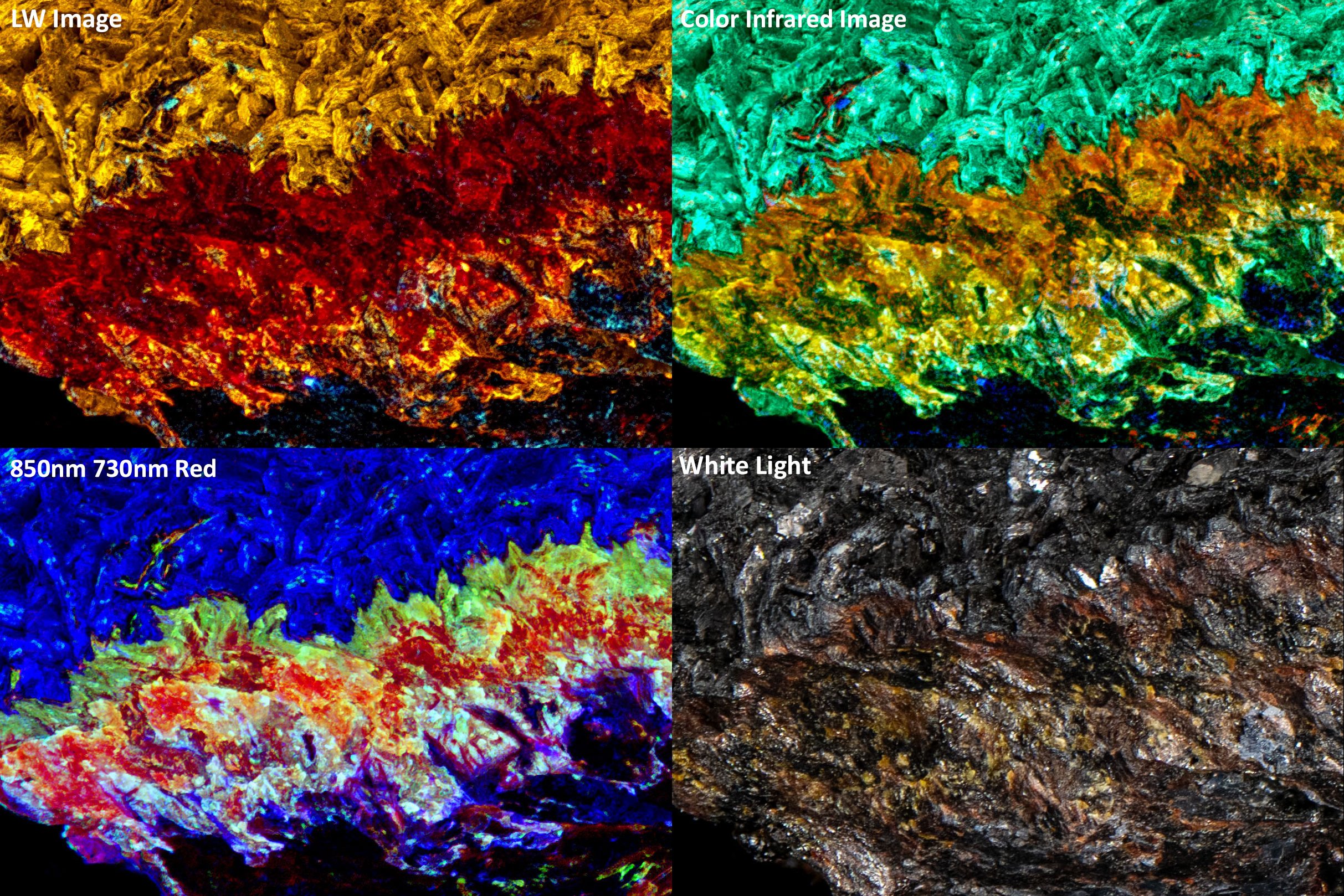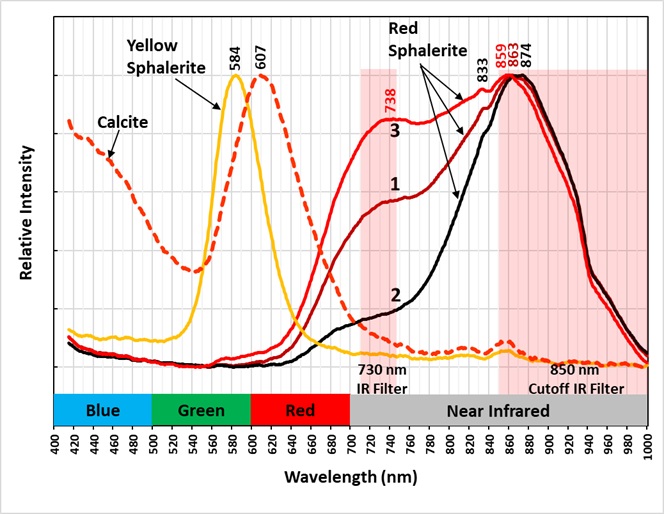Multi-Color Sphalerite from the Huanzala Mine, Peru
Contributed by: Michael Crawford
Date: Sep 26th, 2025
Locality: Huanzala Mine, Huanzala, Huallanca District, Bolognesi Province, Ancash, Peru (See on Mindat)
Size: 7 x 11 cm
Description:
A multi-color fluorescent specimen from the Huanzala Mine, Bolognesi Province, Ancash, Peru. The specimen has large calcite crystals on top of smaller calcite crystals. The calcite fluoresces orange-red under all wavelengths of UV illumination. The longwave emission spectrum of the calcite is a broad peak with a maximum at 607 nm. The calcite is brightest under midwave UV light. The large and small calcite crystals formed on top of four layers of sphalerite. The sphalerite fluoresces yellow and red and its fluorescence is brightest under longwave UV illumination. It is dimmer under midwave and shortwave light. Longwave emission spectra of the red fluorescent sphalerite show that the fluorescence is significantly brighter in the near infrared.
Images of the near infrared fluorescence and the longwave emission spectra show there are four layers of sphalerite in the specimen. The layer below the calcite fluoresces yellow. The emission spectrum of this yellow fluorescent sphalerite peaks at 584 nm. Its fluorescence is activated by manganese replacing zinc. The emission spectrum of the first red fluorescent layer underneath the yellow sphalerite has a bright peak in the near infrared at 863 nm and a secondary peak around 730 to 740 nm. The shoulder of this secondary peak extends into the visible red. It is moderately bright in the visible image, orange in the color infrared image and green in the false color infrared image.
The emission spectrum of the second layer has a peak at 874 nm. This infrared peak is the brightest of the three red fluorescent types of sphalerite and the secondary peak around 730 nm is the dimmest of the three types. In the false color infrared image, this second layer appears red and it is a dark red in the visible image. The third layer appears bluish white in the infrared image. The emission spectrum of this layer has two peaks at 738 nm and 859 nm. The intensity of these peaks is similar and the visible red fluorescence is the brightest red of the three types. The emission spectra of these sphalerites also have a small, sharp peak at 833 nm.
Copper replacing zinc is part of the activation of the red and near infrared fluorescence. However, different co-activators must also be present to cause these different emission spectra in the near infrared. Glenn Waychunas described in the 2020 FMS Journal that the red fluorescence of the sphalerite is activated by copper along with nearby vacancies of sulfur atoms in the ZnS crystal lattice. There is no mention of the source of this sphalerite or if it also creates near infrared fluorescence. Fluomin lists Cu+-Ga3+ and Cu+-In3+ replacing Zn2+ activating red fluorescence. Again, no information is given for the source of the material with this activation or if it also causes near infrared fluorescence. Also, recent research of red fluorescent sphalerite from Philipsburg, Montana found that tungsten and copper is responsible for the red fluorescence. The emission spectra of the Montana sphalerite differ compared to the Peruvian sphalerite spectra.
Summary of luminescence responses:
Sphalerite (Mindat) (RRUFF)
- Fluorescence under Longwave (365nm LED) UV light: Yellow
- Fluorescence under Longwave (365nm LED) UV light: Red
- Fluorescence under Midwave (305nm LED) UV light: Yellow
- Fluorescence under Midwave (305nm LED) UV light: Red
- Fluorescence under Longwave (365nm LED) UV light: Orange
- Fluorescence under Midwave (305nm LED) UV light: Orange

